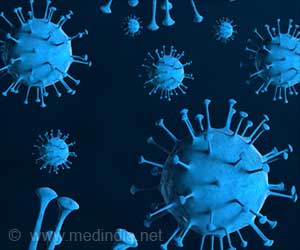This separation ensures that, in the future, exposure to any individual cue is sufficient to activate the prefrontal cortex, which then accesses the hippocampus for recall of the whole memory.
It has been challenging to study memory as a distributed brain process, in part due to technical limitations. Dr. Priya Rajasethupathy, a neuroscientist at The Rockefeller University and her colleagues developed novel techniques to simultaneously record and manipulate neural activity from multiple brain areas as mice navigated multisensory experiences, encountering various sights, sounds and smells while in an endless corridor in virtual reality.
Advertisement
The researchers trained the mice to associate different rooms, which were composed of different combinations of the sensory cues, as rewarding or aversive experiences. Later on, nudged by a specific scent or sound, the mice were able to recall the broader experience, and knew whether to happily expect sugar water or look out for an annoying puff of air.
How Memories are Stored
The experiments demonstrated that while the entorhinal-hippocampal pathway, a well-studied circuit involving the hippocampus and its surrounding region, was essential for forming and storing the experiences, the individual sensory features were being shipped off to prefrontal neurons. Later, when mice encountered particular sensory features, a different circuit was engaged. This time, the prefrontal neurons communicated with the hippocampus to conjure the relevant global memory.
“This suggests that there’s a dedicated pathway for memory recall, separate from memory formation,” said Nakul Yadav, the study’s first author and a graduate student in the Weill Cornell Graduate School of Medical Sciences Physiology, Biophysics and System Biology Program who is co-mentored by Dr. Rajasethupathy and by Dr. Conor Liston, associate professor of psychiatry and of neuroscience in the Feil Family Brain and Mind Research Institute at Weill Cornell Medicine.
These findings have implications for treatment of conditions such as Alzheimer’s disease, where the deficits are thought to be more related to memory recall than storage. The existence of separate storage and retrieval pathways in the brain suggests that targeting of prefrontal recall pathways may be more therapeutically promising, Dr. Rajasethupathy said.
Source: Eurekalert



